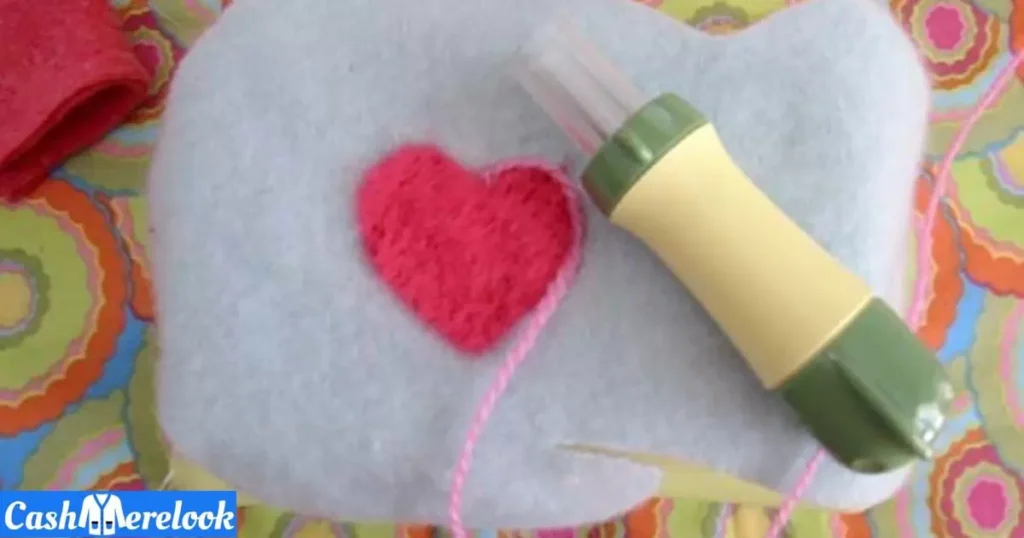Felting cashmere involves washing it in hot, soapy water and causing friction to make it softer and denser. This process tightens the fibers, creating a cozier and more durable texture, enhancing the warmth and quality of the cashmere items.
Turn ordinary cashmere into an extraordinary masterpiece! Learn how to feel cashmere and use your hands to craft a snug and uniquely personalized fabric. Embrace warmth and style tailored just for you!
Transform cashmere into cozy perfection by felting it. Simply use your hands to shape and create a snug, personalized fabric that radiates warmth and style.
Step-by-Step Guide to Felting Cashmere

Prepare Cashmere: Ensure that your cashmere fabric is clean and free from any dirt or oils. This step is crucial for a successful matting process, as contaminants can hinder the fibers from binding together effectively.
Soak in Warm, Soapy Water: Gently soak the cashmere in warm, soapy water. This preliminary soaking helps to open the fibers, making them more receptive to the matting process that follows.
Shape Cashmere: Lay the damp cashmere on a flat surface and shape it to your desired size and thickness. This forms the foundation for your felted creation.
Apply Textured Layer: Place a layer of bubble wrap or another textured material on top of the cashmere. This additional layer assists in the matting process by providing friction. The friction helps tangle and bind the fibers together as you work
Roll and Apply Pressure: Begin rolling the cashmere and the textured layer together. Apply consistent pressure with your hands during the rolling process. This pressure encourages the fibers to intertwine and mesh together, gradually forming a more solid fabric.
Unroll and Reposition: Periodically unroll the cashmere to check its progress. Reposition the fabric to ensure even matting across the entire surface. This step is important for achieving a uniform and well-felted result.
Check Density: As you work, pay attention to the density of the cashmere. You should notice it feeling denser and less fragile. This is an indication that the fibers are successfully matting together.
Rinse in Cool Water: Once you’ve achieved the desired level of matting, rinse the matted cashmere in clean, cool water. This helps remove any soap residue from the fabric.
Squeeze Out Water: Gently squeeze out excess water from the matted cashmere. If needed, reshape the fabric to ensure it maintains the desired size and form.
Air-Dry Completely: Allow the mat
ted cashmere to air-dry completely. This final step is crucial for setting the matted fibers and ensuring your creation retains its shape and texture. Once dry, you can enjoy your personalized, matted cashmere creation!
Felting Cashmere in the Washing Machine: A How-To

Felting cashmere in the washing machine is a straightforward and efficient method. Begin by placing your clean cashmere item in a mesh laundry bag to safeguard it during matting. Select the gentle or wool cycle on your washing machine, using warm water. The machine’s agitating action, coupled with warm water, encourages the cashmere fibers to bind together, resulting in a denser fabric.
As the machine works its magic, keep an eye on the progress through the machine’s window. Check the matting level after the cycle completes, and if needed, repeat the process. Once satisfied, delicately remove the matted cashmere from the bag and reshape it as necessary. The addition of a simple table, providing details on time and cycles, can serve as a useful reference during the matting process.
To finish, let your felted creation air-dry completely. With this easy-to-follow method, your washing machine becomes a convenient tool for transforming ordinary cashmere into a cozy, matted masterpiece. Enjoy the comfort and personalized touch of your newly crafted item!
Transforming Old Cashmere Sweaters through Felting
Transforming old cashmere sweaters through felting is a rewarding and sustainable way to revitalize your wardrobe while embracing creative expression. To embark on this matting journey, begin by washing the cashmere sweater with a gentle detergent or dish soap, ensuring thorough cleaning to remove any residues and prepare the fibers for matting.
Once cleaned, you have various matting methods to choose from. For a convenient approach, consider using a washing machine. Place the washed sweater in a mesh laundry bag, select a gentle cycle, and let the machine agitate. This process encourages the cashmere fibers to shrink, transforming the sweater into a denser and cozier fabric. Experiment with different cycles and settings to achieve the desired matting effect.
If you prefer a hands-on technique, opt for wet matting. Submerge the sweater in warm, soapy water and manually agitate the fibers. As you work, the cashmere begins to shrink and bind together, resulting in a unique texture. For added creativity, explore needle matting or use bubble wrap to create distinctive patterns and designs.
The beauty of felting old cashmere lies in its versatility. Once matted, repurpose the fabric for various projects. The dense and luxurious texture is ideal for crafting accessories like scarves, hats, or mittens. If you’re into knitting, the matted cashmere yarn can enhance your creations, offering a soft and sophisticated touch.
Beyond the creative aspect, matting old cashmere aligns with sustainable fashion practices. By repurposing and transforming old garments, you actively contribute to reducing textile waste and embracing an eco-friendly approach to style.
As an expert in the field, I recommend experimenting with different felting techniques and exploring the vast possibilities that matted cashmere opens up. Whether you choose washing machine matting, or hand matting, or incorporate innovative methods like needle matting, the result is a personalized, cozy masterpiece that not only breathes new life into your wardrobe but also reflects your commitment to sustainable and creative fashion practices.
Expert Tips and Tricks for Felting Cashmere
Embark on the delightful journey of cashmere felting with expert guidance. Begin by ensuring the cleanliness of your cashmere, opting for a gentle, wool-friendly detergent during the washing process.
Secure your cashmere in a mesh bag for machine mat
ting and choose a gentle cycle with warm water to achieve a luxuriously textured fabric. If hand matting is your preference, immerse the cashmere in warm, soapy water, gently agitating to encourage the fibers to bind together.
Experiment with different textures and patterns by incorporating bubble wrap or various felting tools. Regularly monitor the progress to achieve the desired density, and if necessary, repeat the matting process for optimal results. For an extra personal touch, consider combining colors or repurposing old sweaters, adding a sustainable and creative flair to your project.
Whether you’re a crafting novice or a seasoned enthusiast, these expert tips are designed to enhance your matting experience, turning ordinary cashmere into a custom, cozy masterpiece that reflects your unique style.
Creative Ideas for Repurposing Old Cashmere Sweater
Here are some easy ideas for repurposing old cashmere sweater.
Selecting the Cashmere Sweater
Choosing the right cashmere sweater is key to a successful felting project. Opt for a garment with a high percentage of cashmere fibers, ideally 100%. Check for any embellishments, buttons, or zippers, as these can affect the matting process. Prioritize lighter-colored sweaters if you plan to dye or incorporate colors into your project.
Felting the Cashmere Sweater
Begin the felting process by washing the selected cashmere sweater in warm, soapy water. Use a gentle detergent to preserve the delicate fibers. Place the sweater in a mesh laundry bag to protect it during matting. Whether using a washing machine or hand-matting, monitor the progress closely to achieve the desired texture. Agitate the fibers, encouraging them to bind together and create a denser fabric.
Using the Felt from the Sweater
Once the cashmere sweater is matted and dried, the resulting fabric, known as felt, can be repurposed for various creative projects. Cut the felt into desired shapes for accessories like scarves, hats, or mittens. Alternatively, use it as a base for other crafting endeavors, such as appliqué or embroidery. The possibilities are endless, allowing you to turn your matted cashmere into unique and personalized creations.
Understanding the Felting Process: A Step-by-Step Overvie
The matting process involves transforming the structure of cashmere fibers to create a denser and more compact fabric. Begin by preparing the cashmere sweater through washing and shaping. Agitate the fibers through washing or hand-matting to encourage binding. Rinse, reshape, and allow the matted cashmere to air-dry completely. This overview serves as a foundation for mastering the art of textile manipulation, unlocking the potential to create customized, cozy masterpieces from ordinary cashmere garments.
Conclusion
In short, felting cashmere is like giving new life to old sweaters, and it’s pretty fun. Just wash the cashmere in warm, soapy water, let the fibers stick together, and shape the fabric before letting it dry. Whether you use a washing machine or do it by hand, keep an eye on things to get the texture you want. The cool part? You get to turn those old clothes into new things like scarves or hats. You can also try different colors or reuse old sweaters for a special touch. matting cashmere isn’t just a craft; it’s a way to show off your style while being kind to the environment. So, give it a try, have some fun, and make something warm and uniquely yours!












